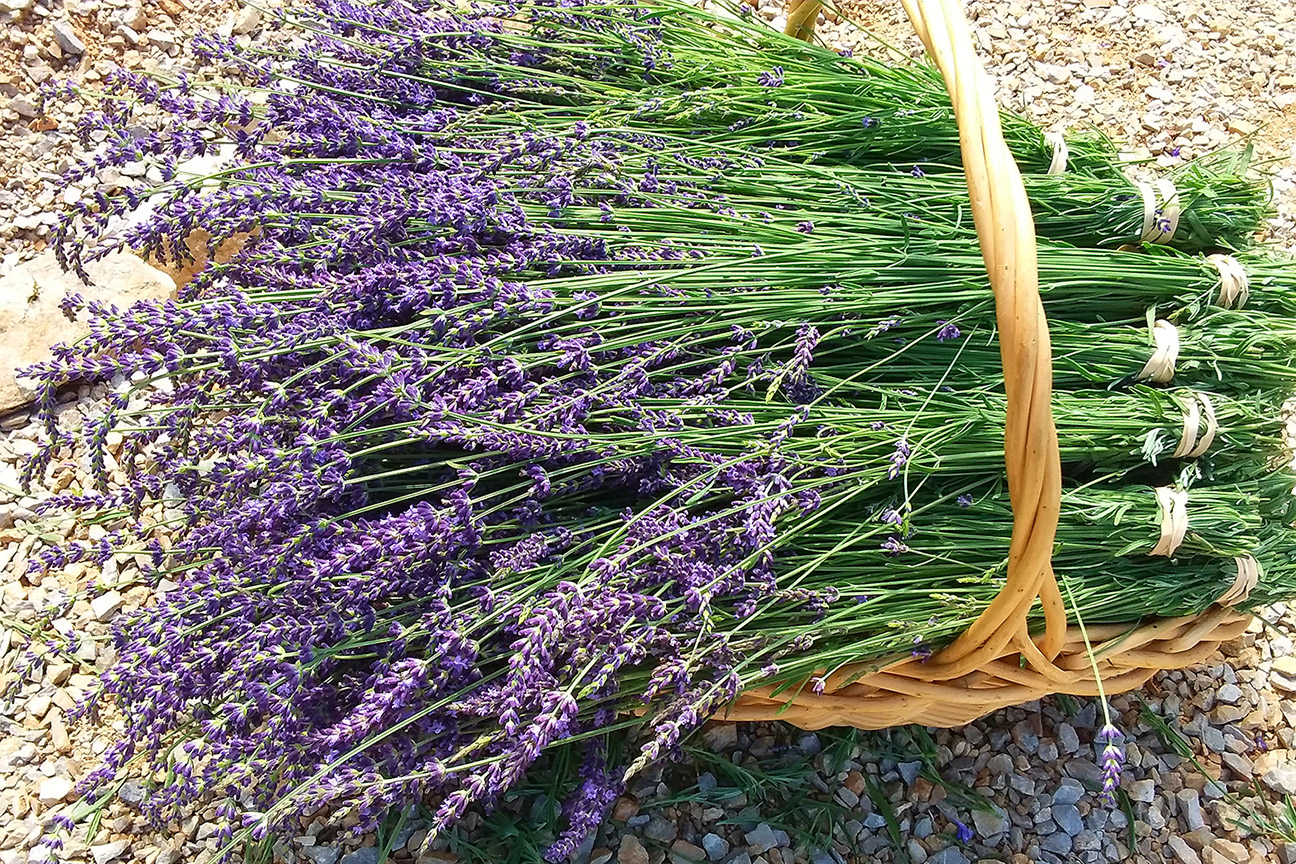Lovely Lavender, A Garden Winner
By Pamela A. Keene | Photography courtesy of Beagle Ridge Herb Farm/Ellen Reynolds. Photography for Sidebar: Cheré Coen

Lavender makes for the perfect accent to beauty products and sachets plus enhances meals — and now new varieties allow it to be grown well in the South
Ah, the sweet smell of lavender. For centuries it’s been associated with love, medicinal benefits, serenity, and grace. Connected with cultures in ancient Egypt and early Christianity to the Victorian age and today’s holistic health practices, lavender’s now making its way into the culinary scene in desserts, meat dishes, and breads.
“Lavender’s versatility amazes me, even after 20 years of growing it, teaching about it, and creating products that use it,” says Ellen Reynolds, owner of Beagle Ridge Herb Farm near Wytheville, Va. “It can be whatever you need it to be and I love teaching about it.”
Nestled in the Blue Ridge Mountains, Beagle Ridge Herb Farm features a plethora of herbs, but the stars of the show are the 800 lavender plants — 14 varieties — grown on approximately one acre. With a bloom season of four-to-six weeks, the plants work overtime as the main ingredient for the soaps, lotions, essential oils, and sachets, plus food-grade blossoms for seasoning.
Reynolds admits that for most of her life, she didn’t know much about lavender. A trip to the Pacific Northwest revealed the plant’s true beauty.
“Until then, I only knew about what I now call ‘fake lavender,’ the kind that smelled like old Aunt Maude, rather musty and heavy,” she says. “On that trip, I saw my first lavender field and smelled the real thing. We then began planting it and realized how versatile it is. There are so many cultivars grown for specific purposes and it’s so beautiful and fragrant.”
Getting to Know Lavender
A long-time gardener, Reynolds decided 20 years ago to create a garden oasis and herb farm on her 210-acre property, a former private hunting preserve.
“We cleared less than 10 acres and left the rest wooded, in keeping with my vision to create a retreat for people to come and enjoy all that the Blue Ridge Mountains have to offer,” she says. “We began teaching classes and offering retreats for groups.”
She planted formal herb and flower gardens, built an education/event center, and a walk-through butterfly house. The property also has a 3.5-mile hiking trail. As time progressed, she focused on lavender, growing for wholesalers and retailers, plus offering classes, events, and a place for weddings. In the past 20 years, visitors from all 50 states and 34 foreign countries have visited the farm for tours or classes.
About seven years ago, Reynolds planted a new cultivar of lavender, Phenomenal, hybridized by Pennsylvania grower Lloyd Traven at Peace Tree Farm. In 2020, Sensational, an additional new cultivar from Peace Tree, was trialed at the farm.
“We have many visitors who come when the plants are in full blossom for our you-pick season in June and July, but throughout the year, we teach classes at our Lavender Academy,” she says. “Since we started our academy three years ago, growers from as far away as Wisconsin have come to learn how to grow lavender.”
Classes cover how to grow various varieties, harvesting, pruning, and hands-on work in the garden, as well as demonstrations for making lotions, bars, and personal-care products.
Growing for the home garden
With so many varieties to choose from, growing lavender can be a trial-and-error undertaking. A little research before putting a single plant in the ground will make things simpler.
“The optimal place to purchase the best varieties for your area is to visit a local lavender farm,” Reynolds says. “Not only will you be able to purchase the type of plants most suited for your climate and soil conditions, you can learn the particular tricks for being successful with growing lavender in your own home landscape.”
For instance, Munstead lavender does not do well in humid conditions. Hidcote, with strongly fragrant blooms, is good for dried preservation. Phenomenal variety stays green in warmer climates and can do well in humid areas.
“Although not a culinary cultivar, for my pick, you can’t go wrong with Grosso lavender,” she says. “It’s fast growing, considered the work horse of the industry due to essential oil production. It also produces fabulous blooms and stems for lavender bunches. Phenomenal is also a good choice.”
Lavender is a perennial that with proper care will come back with plenty of blooms year after year.
“Annual pruning in the late winter or early spring will reward home growers with many more fragrant blossoms, produce a healthier plant, and increase the plants’ longevity,” Reynolds says. “One of my favorite things to do is cut the blooms with long stems, tie them in bunches, hang them upside down and let them dry. Then you can hang them in your kitchen, your laundry room or closet to enjoy their wonderful scent all year.”
beagleridge.org

